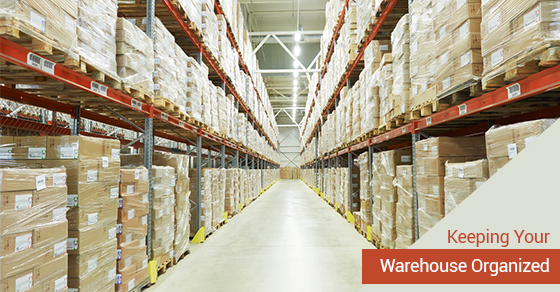The Importance of Warehousing

Let us tell you a story about Toyota. After WWII, Toyota worked to rebuild Japanese industry to be able to compete with the world, in peace. The founder, Sakichi Toyoda, knew that not only was Japanese industry less technologically advanced than the rest of the world, but also had more wasted man-hours. He changed this using what’s called “lean production.”
Lean production relies on reducing every cost that does not add value. One of the biggest was warehousing. Sakichi found that over 25% of most car parts ever produced in Japan ended up being thrown out, because they sat on warehouse shelves, got lost, and eventually became outdated. No matter how efficient Toyota became, their costs would always be a third more than necessary, just because their warehouses were so badly organized.
Here are ways that Sakichi, and others, have saved their businesses with better warehousing.
- Stack items vertically.
- Keep aisles clear.
- Put photos on boxes.
- Organize by product type, not brand.
- Check order history and put the popular products together.
- Get rid of unneeded junk!
Even simple things, like keeping items behind each other, were killing Toyota. Items went missing easily, doing inventory took twice the time, and, in the end, very little space was even saved. If you instead arrange all items lengthwise and keep them in the same horizontal layer, they will all be instantly visible to employees and will rarely get lost.
Many companies use aisle space as storage, thinking that this will save money on space, and prevent them from having to throw out surplus product. The thing is, though, that staff hours cost more than space and lost, obsolete product costs more than wasted surplus, so at best, cluttering up the aisles is a loss.
If you have a lot of identical boxes that only have stickers or numbers, little black and white photos can save employees a lot of time. This cuts down on a lot of training time.
Most customers are there for a specific product. If they change their mind, they won’t want a different product from the same brand, they’ll want a different brand of the same product.
Put the 20% most popular items as close as you can to the loading dock or customer till. Clear the aisles and move some shelves to create a good high-traffic area. Then, enjoy the efficiency as workers barely half to walk anymore!
This is one of the simplest ones: Don’t take up unnecessary real estate with outdated or unused items. Rent a junk removal bin, get rid of anything taking up space needlessly, and give yourself a blank slate to start on!
